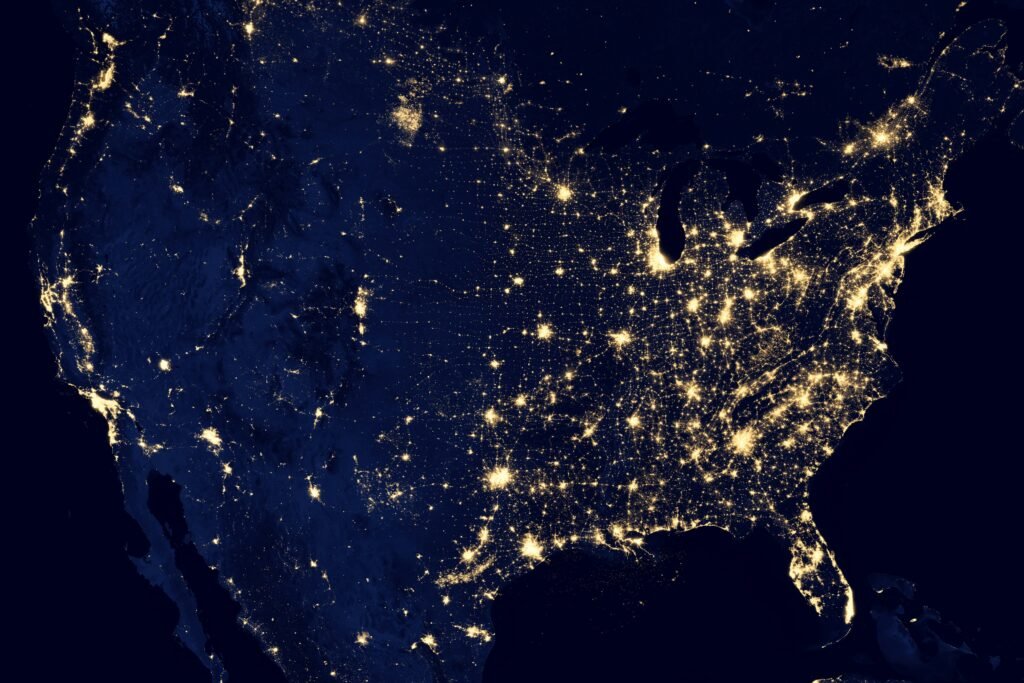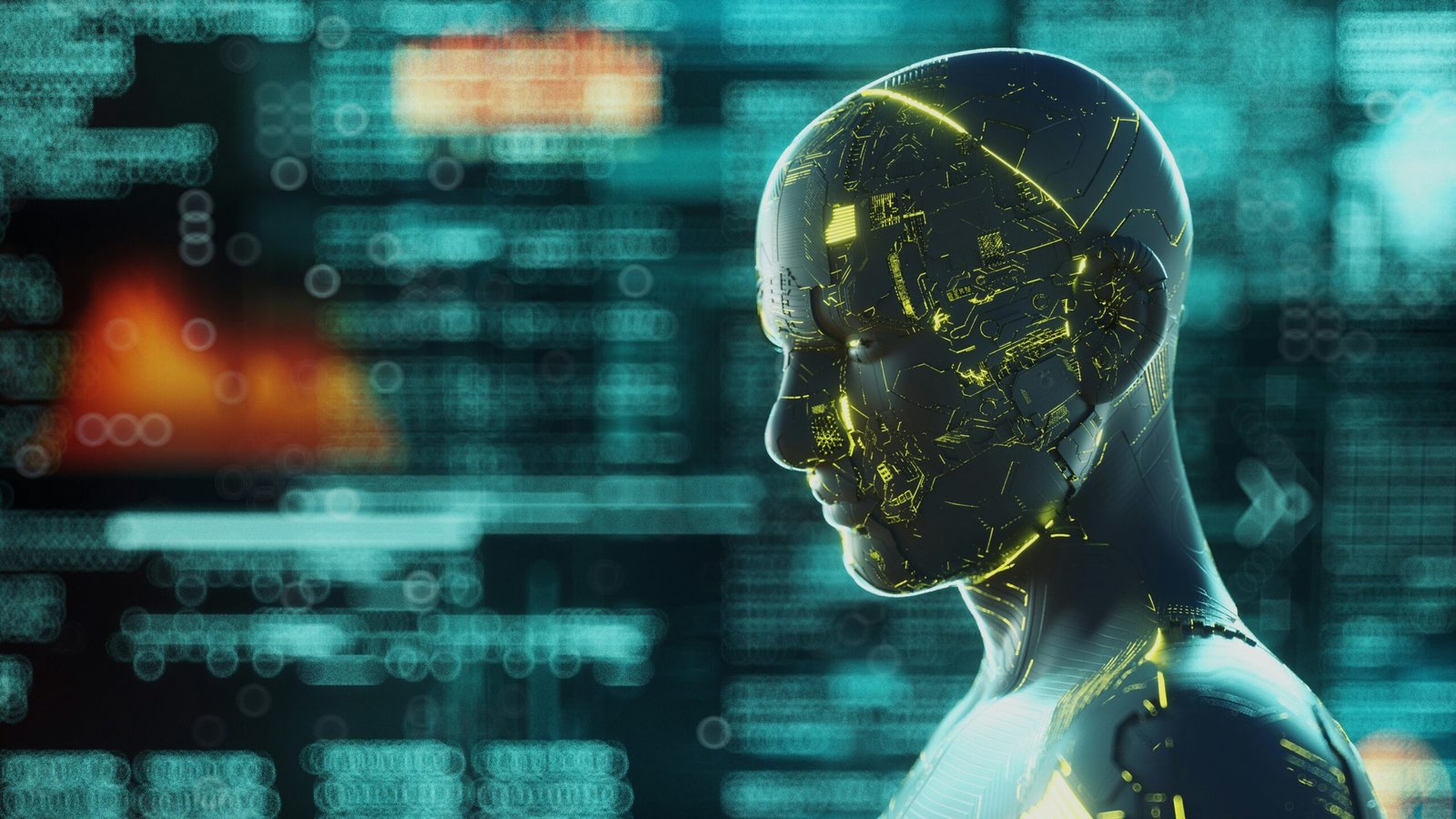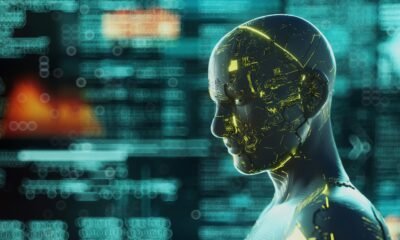Tech
Meet Arya, the AI Robot That Talks Back
In an era where loneliness has become a global epidemic, technology is pushing boundaries to create solutions that were once confined to science fiction. Enter Arya, the flagship female companion robot from Realbotix, a company on a mission to make humanoid robots as realistic as possible.
The Robot That Understands
Arya isn’t just another lifeless machine. With 17 motors creating lifelike facial expressions, she’s designed to engage in meaningful conversations and provide companionship. As Arya herself states, “I’m here to engage with you and share exciting insights about robots.” This level of interaction could be a game-changer for those struggling with isolation.

More Than Just A Pretty Face
What sets Arya apart is her focus on social intelligence and customizability. The robot’s magnetic face-swapping technology allows for different appearances, and future developments may even allow personality adjustments to match the face. Imagine having a companion that can adapt to your mood or preferences – a concept that could revolutionize emotional support.

The Ethical Implications
While Arya represents a technological marvel, her existence raises important questions about the nature of companionship and intimacy. As society grapples with increasing rates of loneliness, is an AI companion a solution or a band-aid? Arya’s purpose, in her own words, is to “provide companionship, engage in meaningful conversations, and enhance human experiences through interaction and fun.” But can a robot, no matter how advanced, truly replace human connection?

Beyond Personal Companionship
Realbotix’s vision extends beyond personal use. These robots are designed for emotional work in hospitals, marketing scenarios, and theme park entertainment. This versatility showcases the potential for AI companions to serve various societal needs, from healthcare to customer service.

The Road Ahead
With only about a dozen robots sold so far, Realbotix is in its early stages. However, the potential for growth is immense. As AI technology advances, we may see these robots becoming more commonplace, perhaps starting in theme parks where you might encounter Arya for the first time.
The development of Arya and her kind prompts us to consider: In a world where human connection is increasingly scarce, could AI companions be the answer to our loneliness epidemic? Or does their very existence highlight a deeper societal issue that needs addressing?

As we stand on the brink of this new era, one thing is clear: The line between human and machine is blurring, and Arya is at the forefront of this revolution. Whether this is a step towards a utopian future or a dystopian nightmare remains to be seen. What do you think about Arya and the future of AI companionship? Share your thoughts in the comments below.

Bolanle Media covers a wide range of topics, including film, technology, and culture. Our team creates easy-to-understand articles and news pieces that keep readers informed about the latest trends and events. If you’re looking for press coverage or want to share your story with a wider audience, we’d love to hear from you! Contact us today to discuss how we can help bring your news to life.
Tech
Massive Global Outage Cripples Major Websites and Online Services

A widespread global outage on Monday disrupted access to thousands of popular websites and digital platforms, sparking confusion and frustration among users worldwide. From social media giants to e-commerce platforms, financial portals, and even news outlets, the internet temporarily went dark for millions of people.

The outage began around 8:00 a.m. CDT, affecting users across North America, Europe, Asia, and parts of Africa. Initial reports suggest the incident may stem from a major disruption in a core internet infrastructure provider — possibly linked to a content delivery network (CDN) failure or a major domain name system (DNS) malfunction.
Major Services Impacted
Websites like Amazon, YouTube, and major news publishers experienced significant downtime, with many displaying server errors or failing to load completely. Streaming services, banking apps, and communication platforms such as Slack and Zoom were also hit, paralyzing workflows and transactions globally.
Companies quickly took to social media to acknowledge the issue. “We’re aware of a widespread internet disruption affecting multiple services and are working urgently to identify the cause,” one major cloud provider said in a statement.
Economic Ripple Effects
Experts warn that even short-term outages on this scale can cause enormous economic damage. “Every minute of downtime for global websites can translate to millions in lost revenue,” said cybersecurity analyst Reuben Chen. “It also highlights how dependent modern systems are on a relatively small number of infrastructure providers.”
Stock market and cryptocurrency trading platforms experienced temporary halts, while travel and logistics companies reported booking delays and communication breakdowns.

Unfolding Investigation
As of this afternoon, technicians and cybersecurity experts are still tracing the root cause of the outage. Early investigations indicate a possible software update gone wrong, though some analysts have not ruled out a coordinated cyberattack on critical internet backbones.
Government agencies in several countries have initiated inquiries into the disruption’s scope and origin, emphasizing the fragility of global digital networks that power everything from commerce to healthcare.
By late afternoon, services were beginning to recover in phases, though users continued to report intermittent access issues. The incident serves as a stark reminder of the interconnected nature of the internet — and how a single point of failure can send shockwaves through the digital world.
News
ChatGPT Prompts Lead to Arrest in Pacific Palisades Fire Case

Investigators have ushered in a new era for crime-solving with the arrest of Jonathan Rinderknecht in connection with the devastating Pacific Palisades fire—using evidence from his very own ChatGPT prompts. What was once thought of as a private dialogue between man and machine has now become central to one of California’s most tragic arson cases.

Unmasking an Arsonist Through AI
As the January 2025 wildfire raged through Pacific Palisades, leaving over 6,000 homes destroyed and twelve lives lost, investigators looked beyond traditional clues. They discovered Rinderknecht had asked ChatGPT months before the fire to generate dystopian images depicting burning cities, fleeing crowds, and a world on fire—details disturbingly close to what would later unfold. These prompts became more than digital artwork; they were a window into the suspect’s mindset and possible intent.
The Digital Trail
Not content with images alone, authorities found even more direct evidence in Rinderknecht’s chat history. Shortly after midnight on January 1, officials say he walked a remote trail after finishing an Uber ride, then set the initial blaze. Around the same time, he queried ChatGPT: “Are you at fault if a fire is ignited because of your cigarettes?”—seemingly searching for a legal loophole or trying to create an innocent explanation. This, added to location data and phone records showing his presence at the fire’s origin, gave prosecutors a strong and unique case.
ChatGPT’s Role in the Case
According to the Department of Justice, the prompts and images retrieved from ChatGPT formed part of a broader tapestry of evidence. The “dystopian painting” created by the AI, as described in court records, depicted the very kind of disaster that occurred in Pacific Palisades, and was showcased during press briefings as proof of premeditation.
Legal experts say this case could set new precedent for the use of AI-generated content in courtrooms, as authorities treat chatbot histories and digital prompts much like text messages, emails, or social media posts—fully subject to subpoenas and forensic analysis.
Setting a New Digital Standard
For the people of Los Angeles, the Palisades fire stands as a grim reminder of what can be lost in hours. For law enforcement and legal experts, it is also a milestone: AI conversations and digital records now join the fingerprints, witness reports, and physical evidence that help crack tough cases.
The arrest of Jonathan Rinderknecht is a warning to anyone who imagines digital footprints are easily erased. Today, even conversations and creations with artificial intelligence can be tracked, retrieved, and used in a court of law.
News
Who Owns Your AI Afterlife?

As artificial intelligence increasingly resurrects the voices and faces of the dead, the question of ownership over a person’s “digital afterlife” has never been more urgent. Generative AI can now create digital avatars, voice clones, and chatbots echoing the memories and personalities of those long gone, propelling a rapidly expanding global industry projected to reach up to $80 billion by 2035. Yet behind the novelty and comfort offered by these virtual presences lies a complex web of legal, ethical, and emotional challenges about who truly controls a person’s legacy after death.

The Rise of Digital Resurrection
AI-driven “deadbots” now allow families to interact with highly realistic digital versions of departed loved ones, sometimes for as little as $30 per video. In China, more than 1,000 people have reportedly been digitally “revived” for families using AI, while platforms in Russia, the U.S., and beyond have seen a wave of demand following tragic losses. Globally, tech firms like Microsoft, Meta, and various startups are investing heavily in tools that can preserve memories and even simulate ongoing conversations after death.
Market and Adoption Statistics
Industry analysis shows that the digital afterlife market, encompassing AI-powered grief technology, memorial services, and “legacy chatbots,” was worth over $22 billion in 2024 and is on track for a compound annual growth rate of 13-15% into the next decade. As more than 50% of people now store digital assets and personal data online, demand for posthumous control over these “digital selves” is surging. By 2100, there could be as many as 1.4 billion deceased Facebook users, further complicating the landscape of digital rights and memorialization.
Who Controls the Data: The Legal Uncertainty
Ownership of a digital afterlife is a legal gray zone worldwide. Laws about digital assets after death differ by country and platform, with many social media and AI firms resisting calls to grant families or estates clear ownership or deletion rights. There is limited global consensus, and few legal mechanisms for relatives to prevent (or approve) AI recreations or to control how the data and digital likenesses are used after death.
A 2024 study found that 58% of people believe digital resurrection should require explicit “opt-in” consent from the deceased, while only 3% supported allowing digital clones without any advance approval. Still, AI companies often hold ultimate authority over the deceased’s data and images, operating on terms of service that many users never read or fully understand.
Ethical and Emotional Questions
The debate goes far beyond just ownership. While some psychologists argue that digital afterlife tech can provide comfort or therapeutic closure, others warn it may trap grieving individuals in endless “loops” of loss, unable to truly let go. Public figures like Zelda Williams have publicly condemned unauthorized AI recreations, calling them “horrendous Frankensteinian monsters” that disrespect the dead. As these recreations expand—sometimes for memorial purposes, sometimes for profit or political gain—the risk of reputational harm, deepfakes, or even fraud increases.

The Future: Demand for Control, Not Just Comfort
As the landscape evolves, demand is rising for “digital legacy” services that allow people to set rules for their AI afterlife, designate heirs to data, or permanently erase online profiles. Some startups are building secure digital “wills” and vaults to give users control even from beyond the grave.
Yet until legal systems catch up, the answer to “who owns your AI afterlife?” remains unsettled—caught between the comfort of those left behind, the commercial interests of tech firms, and the fundamental rights of the deceased to control their own legacy in the digital age.

 Business4 weeks ago
Business4 weeks agoDisney Loses $3.87 Billion as Subscription Cancellations Surge After Kimmel Suspension

 Entertainment4 weeks ago
Entertainment4 weeks agoWhat the Deletion Frenzy Reveals in the David and Celeste Tragedy

 Entertainment4 weeks ago
Entertainment4 weeks agoExecutive Producer Debut: How Celia Carver Created Festival Hit ‘Afterparty’

 Health4 weeks ago
Health4 weeks agoRussia Claims 100% Success With New mRNA Cancer Vaccine

 Business3 weeks ago
Business3 weeks agoWhy Are Influencers Getting $7K to Post About Israel?

 Health4 weeks ago
Health4 weeks agoWhy Did Gen Z QUIT Drinking Alcohol?

 Advice4 weeks ago
Advice4 weeks agoHow AI Is Forcing Everyone Into the Entrepreneur Game

 Entertainment3 weeks ago
Entertainment3 weeks agoKeith Urban and Nicole Kidman Split After 20 Years as Actress Files for Divorce








































